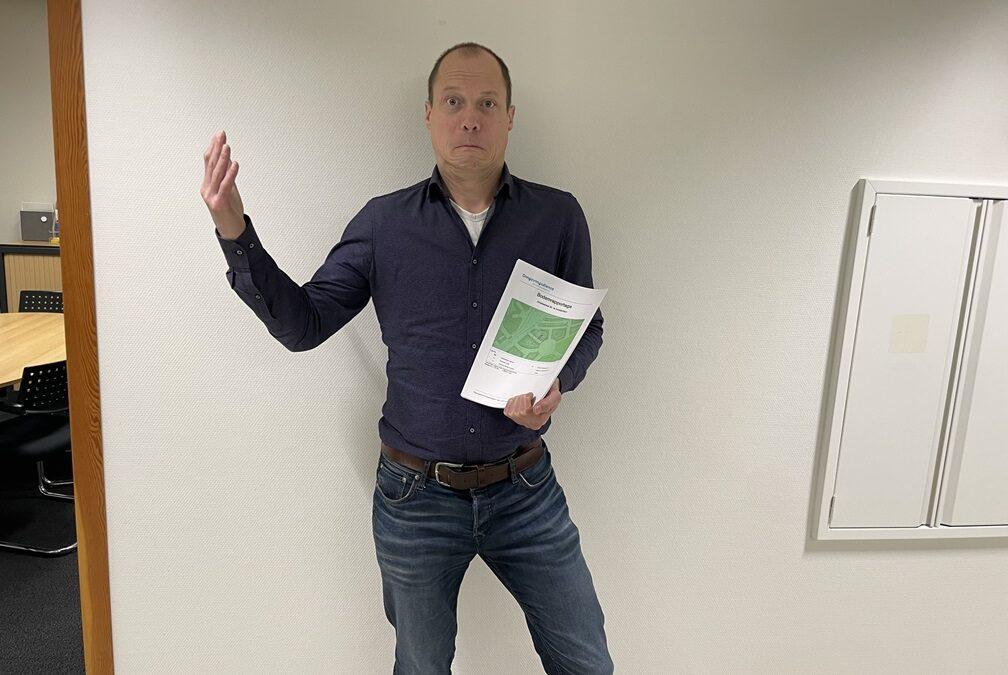Anyone who has ever appraised or purchased something in a big city will not be unfamiliar; the soil report you get in front of you is 1 big incomprehensible piece of text more than 50 pages long. You want to buy or appraise that property, and you, as a real estate professional, need to find something about this soil report. In this article, we explain to you what our advice is to do.
Step 1 – Land Registry
First of all, look in the cadastral property info to see if there is anything there about orders for remediation, or other reports of soil contamination. It may also be that there is a decision from competent authority that an (exploratory) soil investigation must take place (usually this means that something is really already wrong).
See an example of cadastral property information with a public law restriction here:
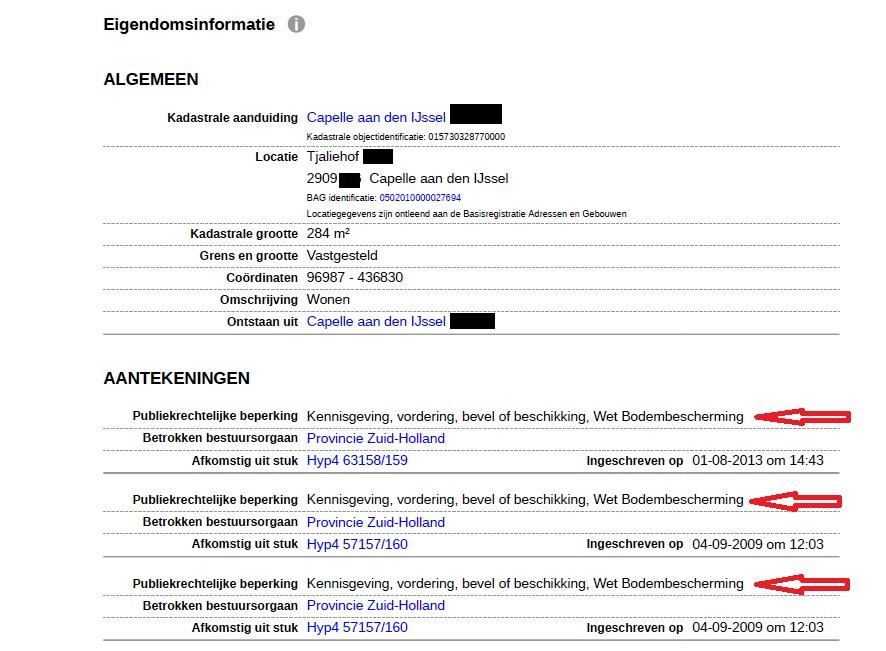
Step 2 – Questionnaire
Check the questionnaire for reports of soil contamination. Usually a seller will write down that these are not there as far as they know, but you must have checked this information carefully as a broker or appraiser.
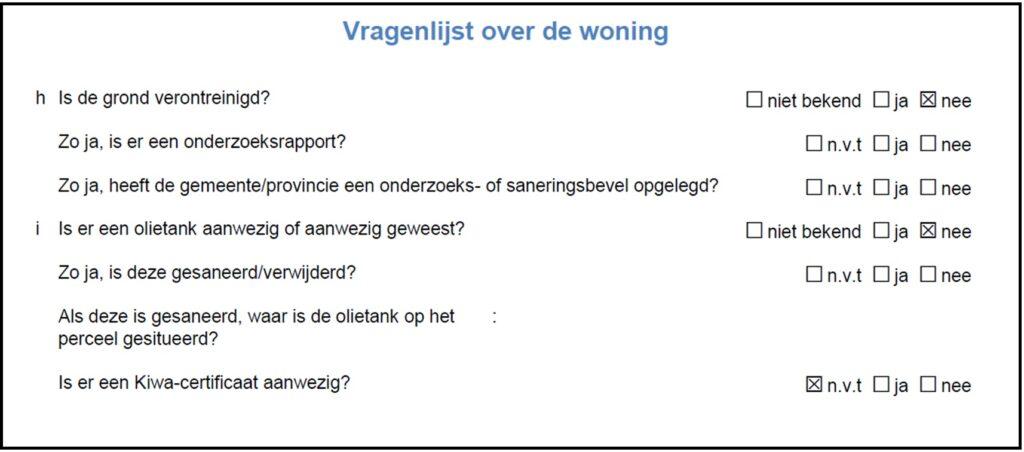
Step 3 – Certificate of Delivery/Property
Check the deed of delivery for reports of soil contamination. In the deed of delivery, you can also read if contamination is/was already known and if there are any use restrictions, for example. See the example below of a deed of delivery where you read that there are use restrictions at a particular property.
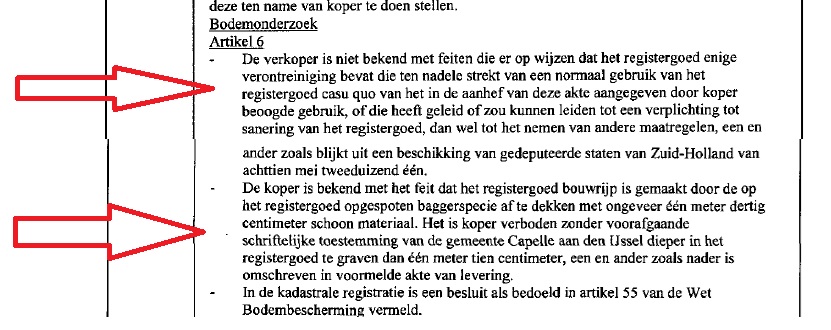
Step 4 – Search for the address in question
Go to the soil report and check purely the specific address first. If necessary, just use the ctrl-F function (on Apple: Commend-F) to look it up. Look there for the reports belonging to the object itself. Look carefully for oil tanks near the home or neighbors. If there is a tank. Make sure you are sure it is sanitized. Ideally, a recent soil test has taken place on the property’s plot where this plot came out completely clean. But usually you are not so lucky. There is a good chance that you will find information at the address of the property where there is no further clarity. For example, about an oil tank near the house of which it literally says ‘status unknown’ or a remediation plan (SP) has been drawn up in the past where nothing more can be read about an execution of that remediation and especially about an ‘ok’ remediation evaluation. See, for example, here:
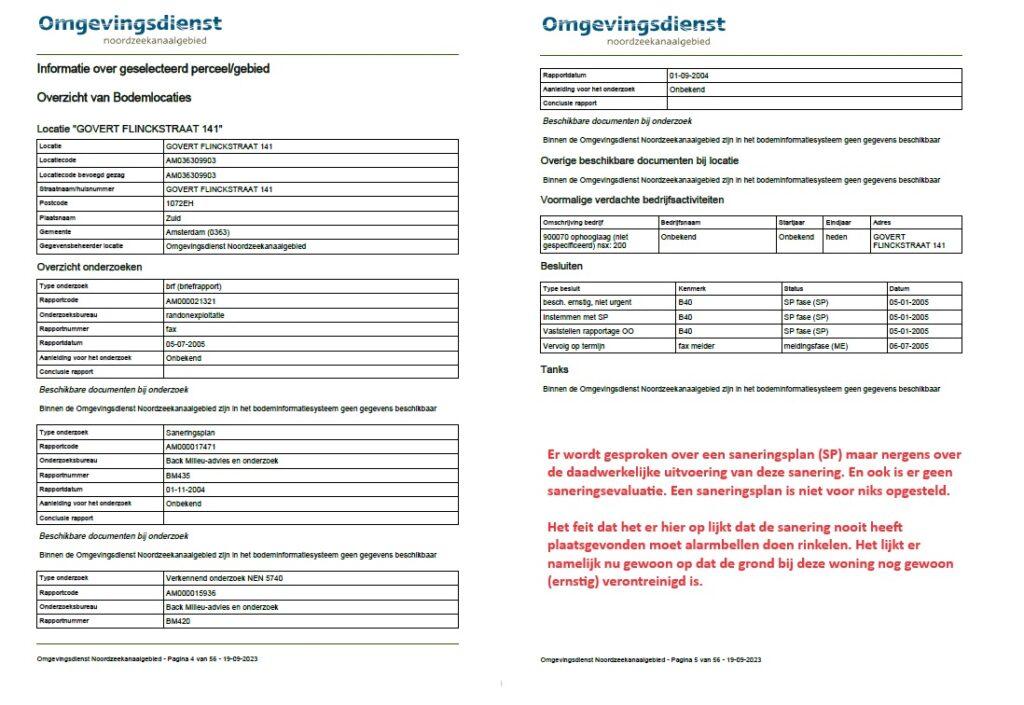
In such a case, it is important for you as a broker or appraiser to request more information about the parcel and the missing information from the competent authority. Often this is the environmental department. Most environmental services allow this retrieval of information through a “case system” on their website.
Step 5 – Suspicious historical activities
Search the soil report for suspicious and/or commercial activities in the 25-m radius around the property. Suspicious historical activities such as a gas station or a chemical laundry also make your client’s home suspicious. See, for example, here:
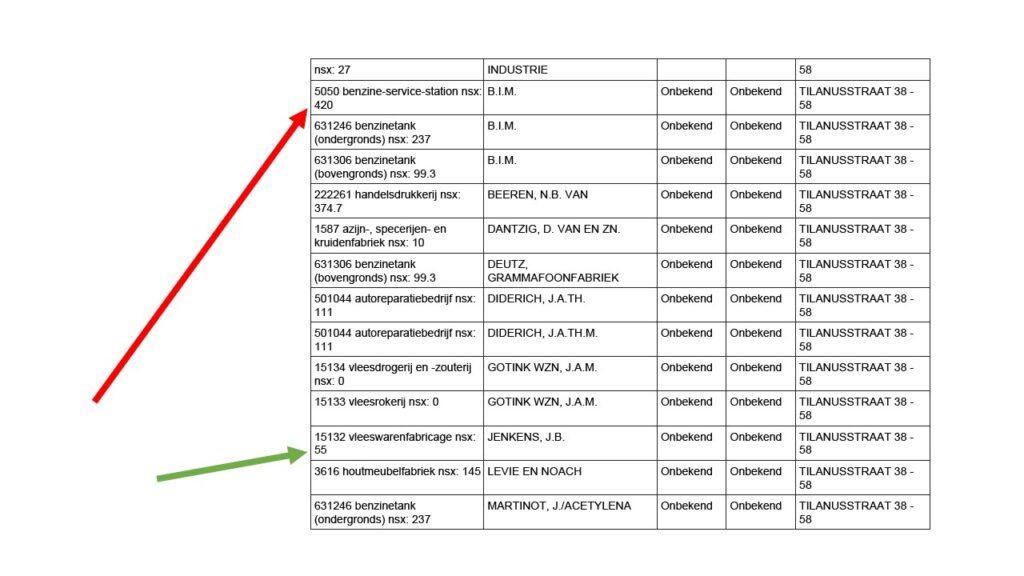
With any luck, there will be an NSX score among the various historical activities. Any NSX score above 100 is a risk of contamination. The higher the NSX score, the higher the risk of pollution at your home. Above, as an example, the red line indicates a gas station with an NSX score of 420 attached. So this activity indicates that thanks to the presence of this gas station, the risk of pollution at your residence is high. The green line indicates a harmless-seeming activity, namely a meat processing plant with an NSX score of 55 (well below 100, in other words). Other suspected activities are embankments and attenuations.
Step 6 – Other notifications
Further, look roughly at what you find in the soil report and try to get an impression of the soil conditions in the area. If you quickly scroll through a 50-page report, in many cases you will already see all the information about current and historical contamination, remediation work done and soil testing. The 50-page reports are particularly common in large cities where there is history. Lelystad will not be exciting because it is too young. But with soil reports from Amsterdam, Haarlem, Utrecht, Rotterdam, etc., these are strongly expected to be thick reports full of information about contaminants within 25 meters of the property you are working on.
There is no point in reading everything literally letter by letter. As a real estate appraiser, you are not and will not become a soil expert. Your job should be to properly assess the risk of contamination at your client’s (upcoming) home. The moment a soil report in a 25-meter radius around the home is full of old and/or current contamination, it very simply means that there is a high probability that the soil at/under your home contains contamination.
Step 7 – Draw your conclusion
Ok, so you looked for information about contamination in the land registry extract, the questionnaire, the deed of delivery and the soil report. Let’s assume in this example that these documents the land registry, questionnaire and delivery deed came out “clean. Last, you went through a thick soil report on outline. You do not see any oil tanks located near the property, but you do see that “historic activities” have occurred in the immediate vicinity of the property with an NSX score considerably higher than 100 (think gas stations, chemical laundries, auto garages, etc.). You also see in the thick soil report that there are all reports of current and historical contamination as well as remediation within a 25-meter radius of the appraised property. This means that you as a real estate agent or appraiser may now safely draw the conclusion that the risk of contamination at the property in question does exist. Base this on the fact that there have been several suspected historical business activities in the neighborhood and old and current moderate to severe contaminants are listed in several areas around the property.
Step 8A – Report your conclusion/advice in writing (for buying agents)
If you are a buying agent, you don’t want your client to call you in 10 years and tell you that they have €30,000 worth of damage due to a serious contamination and hold you liable for those costs. Partly for this reason, it is very important for your liability to properly inform your client about the risks of this contamination. Always do this in writing and save this sent mail as a PDF in your purchase file and as a mail link it in your CRM to the purchase file and to your customer.
This is an example you can email your client:
“The report from the North Sea Canal Area Environmental Service shows that there is light to strong/serious contamination in the soil in the immediate vicinity of the appraised property and also remediation has been or is yet to be carried out in several places. This is the case a large portions of this city. Also, there have been several suspected historical business activities in the immediate area, which makes the risk of contamination at the appraised real. However, the risk of contamination at this location in Amsterdam is simply always quite high. As far as I can see, there are no decontamination orders on/near the property which are at the expense of the property owner. Further (exploratory soil) research can be carried out if you want more certainty about this.”
Step 8B – Properly report your findings as an appraiser (for appraisers)
If you are an appraiser, then in section J of the appraisal report (Contamination) you should report what you were able to read in the sources you mentioned (Land Registry, Municipality/Environmental Department).
To the question, “ Is there any information about contamination in or near the property’s soil in other sources?” for example, you might report something like below:
“The report from the North Sea Canal Area Environmental Service shows that there is light to strong/serious contamination in the soil in the immediate vicinity of the appraised property and also remediation has been or is yet to be carried out in several places. This is the case in large parts of this city. Also, several suspected historical business activities have taken place in the immediate area, which makes the risk of contamination at the appraised property real. However, the risk of contamination at this location in Amsterdam is simply always quite high. As far as the appraiser can see there are no ordinances for remediation at/near the appraised property which are for the property owner’s expense. Further (exploratory soil) research can be carried out if one wants more certainty about this.”
After this, the appraisal report asks this question:
“Do I see a risk that there is contaminated soil or groundwater at the property or near the property?”
You could answer YES to this question and report, for example, the following:“The soil report clearly shows that (as in large parts of the rest of the city) there is a lot of contamination in the area. Also, several suspected historical business activities have occurred in the immediate vicinity of the appraised property which could have spread contamination. This also means for the appraised property that there is certainly a risk of contamination at or below the appraised property. However, this in fact applies to all homes and parcels of land in the vicinity of the valued property.”
Need help with a (possible) contamination?
Are you sitting with an issue on a piece of property. For example, do you want to be sure if the soil is clean and want to have a remediation or maybe just a soil test done? As a nationwide real estate agency, we have several good environmental maintenance agencies sitting throughout the country that we work with. If you would like to get in touch with one of these consulting companies in your area, please fill out this form and we’ll put you in touch with them (free service from us).

